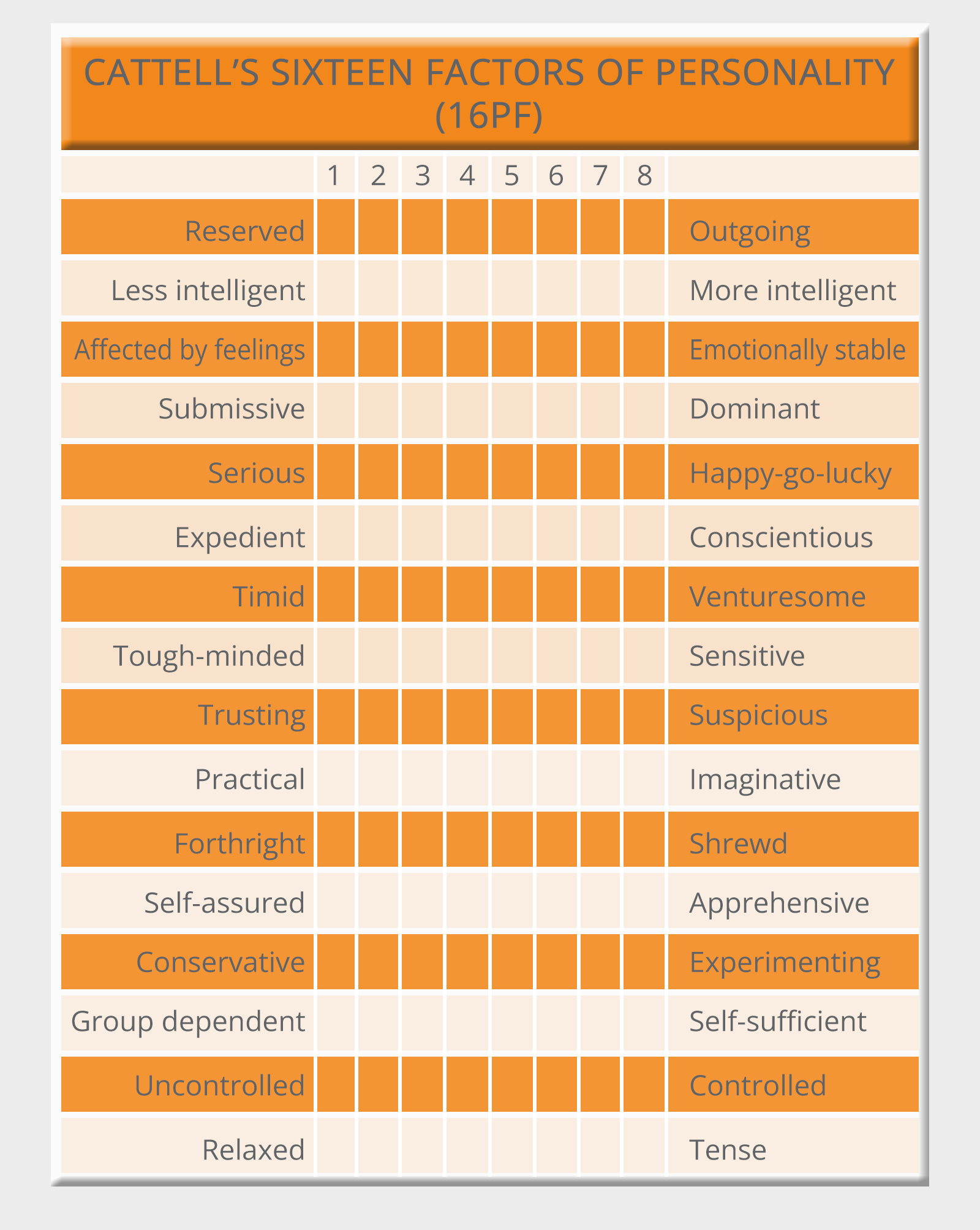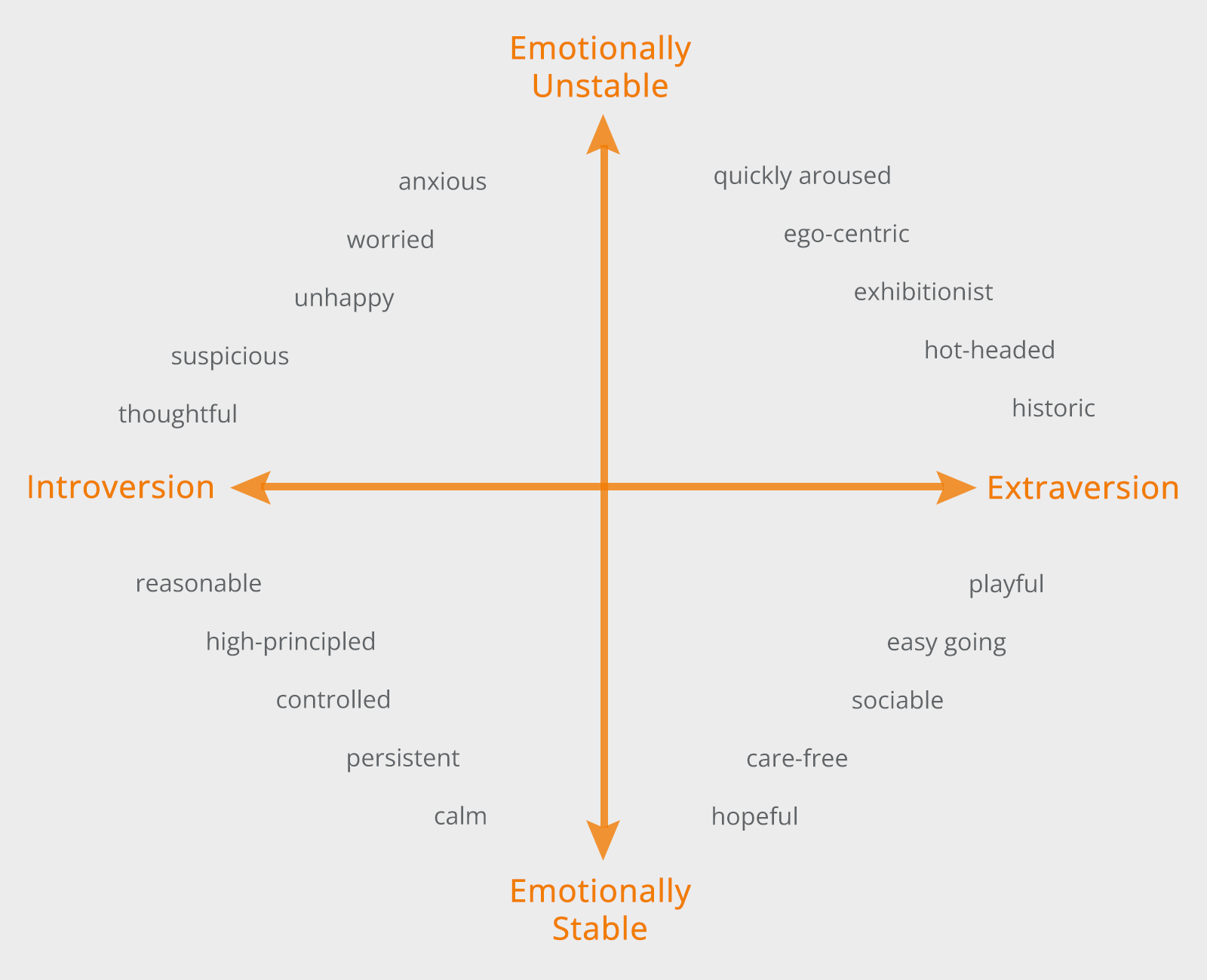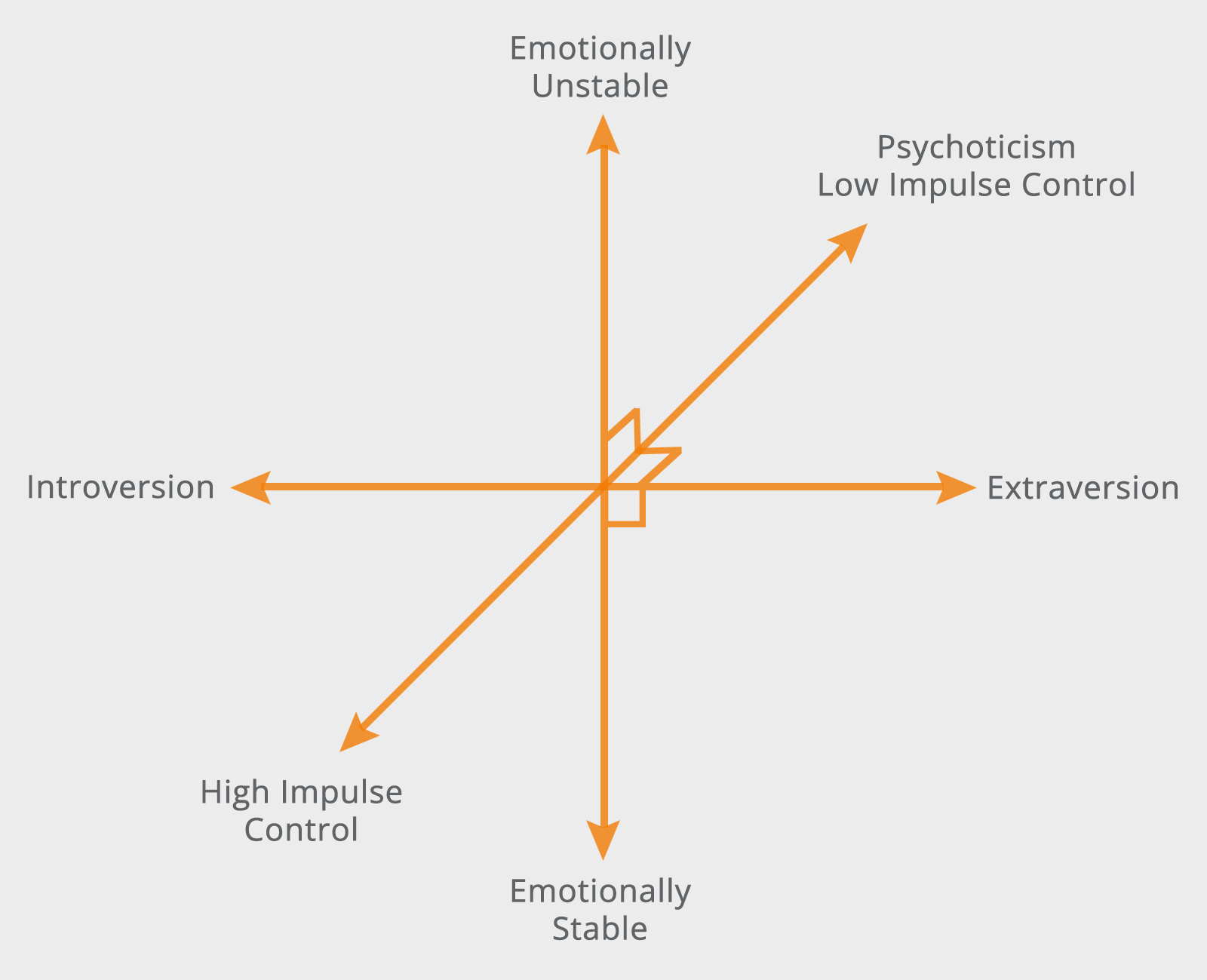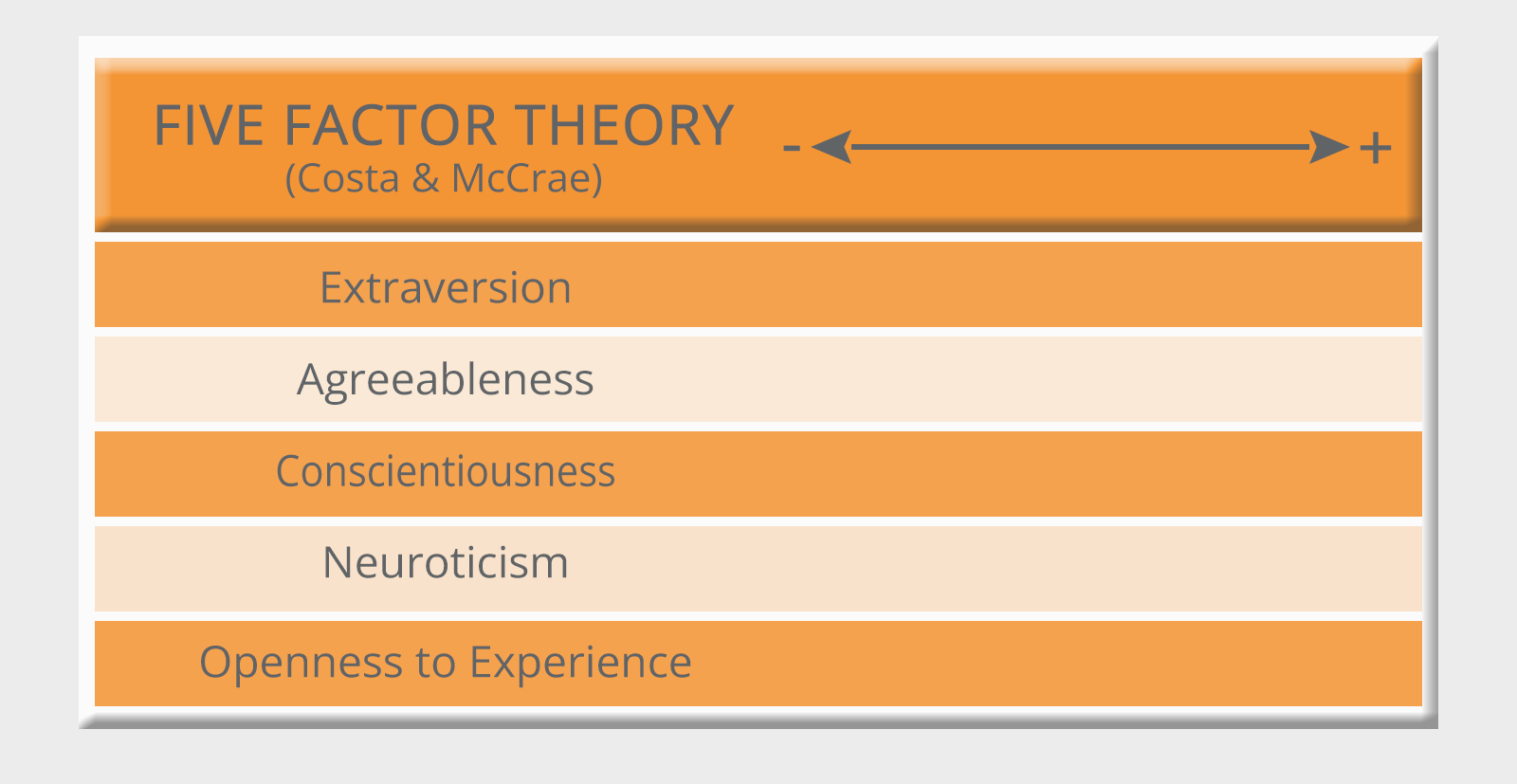The History of Personality Testing
Updated November 15, 2023
Many of the tests and much of the terminology developed in the last century is still in widespread use today and forms the basis of current personality theory and personality tests.
To understand more about where modern personality theory comes from, we need to examine the work of Gordon Allport, Raymond Cattell, Hans Eysenck, Paul Costa & Robert McCrae.
Gordon Allport (1897–1967)
Allport was one of the first psychologists to focus on the study of personality.
He rejected both the psychoanalytic approach, which he thought often went too deep, and the behavioral approach, which he thought often did not go deep enough.
He emphasized the uniqueness of each individual and the importance of the present context, as opposed to past history, for understanding personality.
He identified thousands of personality traits and grouped these into three categories:

Practice Presonality Test with JobTestPrep
-
Cardinal traits – A cardinal trait dominates the personality across time and situations. A cardinal trait is the most important component of your personality; for example, ambition, self-sacrifice, etc. Very few people develop a cardinal trait and, if they do, it tends to be late in life.
-
Central traits – These are five to ten traits that are stable across time and situations. These are the building blocks of personality. For example, friendliness, meanness, happiness, etc. Most personality theories focus on describing or explaining central traits.
-
Secondary traits – These characteristics are only evident in some situations and are of less importance to personality theorists. They are aspects of the personality that aren’t quite so obvious or so consistent.
Allport was also one of the first researchers to distinguish between motive and drive.
He suggested that a drive formed as a reaction to a motive may outgrow the motive as a reason. The drive then is autonomous and distinct from the motive.
For example, the drive associated with making money to buy goods and services often becomes an end in itself.
Raymond Cattell (1905–1998)
Cattell took the thousands of traits described by Allport and condensed them down to 16 primary traits using the statistical method of factor analysis.
He was an early proponent of using factor analytical methods instead of what he called ‘verbal theorizing’ to explore the basic dimensions of personality, motivation and cognitive abilities.
The 16 PF (Personality Factors) test which resulted from this work is still in use today.
He called these factors ‘source traits’ because he believed they provide the underlying source for the surface behaviors we think of as personality.
This theory of personality factors and the instrument used to measure them are known respectively as the 16 personality factor model and the 16PF Questionnaire.

If you need to prepare for a number of different employment tests and want to outsmart the competition, choose a Premium Membership from JobTestPrep.
You will get access to three PrepPacks of your choice, from a database that covers all the major test providers and employers and tailored profession packs.
Hans Eysenck (1916–1997)
Eysenck proposed that only two factors were necessary to explain individual differences in personality.
He argued that Cattell's model contained too many factors which were similar to each other and that a simple two-factor model could encompass the 16 traits proposed by Cattell.
This model had the following dimensions:

Eysenck argued that these traits were associated with innate biological differences.
For example, extraverts need more stimulation than introverts do because they have lower resting levels of nervous system arousal than introverts.
Eysenck developed a third factor, psychoticism, which dealt with a predisposition to be psychotic (not grounded in reality) or sociopathic (psychologically unattached).

The result was the so-called PEN personality model.
P scale:
Psychoticism -------------------------------------- High Impulse Control
Aggressive, cold, egocentric, Nonagressive, warm, concerned for others
impersonal, impulsive, antisocial, personally involved, considerate, social,
unempathetic, creative, tough-minded empathetic, uncreative, persuadable
E scale:
Extraversion -------------------------------------- Introversion
Sociable, lively, active, assertive, Hermetic, taciturn, passive, unassertive,
sensation-seeking, carefree, stoical, reserved, dependent,
dominant, surgent, venturesome, even-tempered, risk-averse
N scale:
Neuroticism --------------------------------------- Emotional Stability
Anxious, depressed, guilt-feelings, unconcerned, happy, without regret,
low self-esteem, tense, irrational, high self-esteem, relaxed, rational,
shy, moody, emotional, confident, content, controlled
Paul Costa (1942–) & Robert McCrae (1949–)
In the final decades of the twentieth century, an increasing number of psychologists concluded that the three-factor model was too simple and that 16 factors were too many.
In 1990, Paul Costa and Robert McCrae presented their ‘Five-Factor Theory’ and introduced the associated NEO Personality Inventory.

This Costa & McCrae model has received significant support from other research and is now widely accepted among psychologists.
There is some minor disagreement regarding the exact definition and naming of these five factors but this is largely an academic debate.
These five aspects of personality are referred to as the five-factors or sometimes just the ‘big five’.





